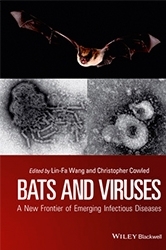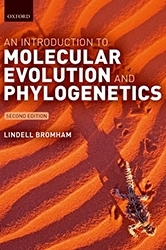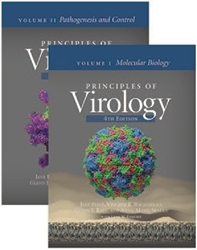Reviews
Issue: The Mobile Microbe
08 November 2016 article


Holding Hands with Bacteria: The Life and Work of Marjory Stephenson
WRITTEN BY S. ŠTRBÁŇOVÁ
SPRINGER BRIEFS IN MOLECULAR SCIENCE, HEIDELBERG: SPRINGER-VERLAG (2016)
£37.99 ISBN 978-3662497364/ISSN (PRINTED) 2191-5407/ISSN (ELECTRONIC) 2191-5415
When a science reaches maturity, those interested in its early days can sometimes find the history hard to access. Štrbáňová deserves the thanks of all microbiologists for her readable and scholarly biography of Marjory Stephenson, a gifted pioneer of their subject.
Stephenson spent most of her career working in association with F. G. Hopkins at the Institute of Biochemistry, Cambridge. Hopkins allowed his colleagues free rein in selecting research projects, and Stephenson chose to work with micro-organisms (mostly bacteria but occasionally yeast). Over 25 years she: elucidated several important reactions specific to bacteria; made, with her students, fundamental contributions to the study of ‘enzyme adaptation’ (induced enzyme synthesis); published Bacterial Metabolism; was instrumental in founding the Society for General Microbiology and was unanimously voted as President by its inaugural committee; and became one of the first women to be elected to the Royal Society. Sadly, she died when she was only 63.
The biography shows that Stephenson was not only an outstanding scientist but also vivacious, witty, cultured and generous, both with her time and her money. She cared deeply for her students and was active on behalf of refugee scientists. Stephenson suffered gender discrimination – her laboratory was never officially recognised as a Unit and she was not designated Director, and her university awarded her the title of DSc in 1936, but not the degree itself. Štrbáňová paints for her readers an absorbing portrait of a brilliant and deeply lovable woman with the grace and self-confidence to take such slights in her stride.
MICHAEL YUDKIN
University of Oxford

Bats and Viruses: A New Frontier of Emerging Infectious Diseases
EDITED BY L. WANG & C. COWLED
WILEY BLACKWELL (2015)
£100.50 ISBN 978-1118818732
It is believed that about three-quarters of emerging infectious diseases are zoonoses, and bats are an important reservoir of a very wide range of viruses. Bats are unique in a number of ways that are relevant to the transmission of infectious diseases between themselves and to humans. They live very close together in vast communities, they are able to fly, and they are present in every environment where humans live. Studies have suggested that bats harbour more viruses (in all major virus families) than other mammals, including life-threatening ones like rabies, Ebola, MERS, Nipah and Hendra. Despite harbouring so many potentially dangerous viruses, experimentally and naturally infected bats only very rarely display symptoms of disease. The co-evolutionary history of bats and viruses, spanning 65 million years, has probably resulted in the establishment of a state of equilibrium, allowing both viruses and their hosts to co-exist in a disease-free state. Therefore, bats not only represent a reservoir for numerous viruses, but also a ‘melting pot’ for the emergence of new viruses resulting from recombination and re-assortment. This relatively small book contains a vast amount of useful information, describing the features of bats that help to explain how they serve as a viral reservoir and also vessels for the creation of new ones that may pose threats to humans in the future. It is obviously a highly specialised book, but it will be a very interesting and valuable text to students and researchers in terms of its presentation of bat biology, and the current and potential future threats to public health.
CHRISTOPHER RING
Middlesex University

An Introduction to Molecular Evolution and Phylogenetics
WRITTEN BY L. BROMHAM
PUBLISHED BY OXFORD UNIVERSITY PRESS (2016)
£38.99 ISBN 978-0198736363
Innovative is the keyword when describing An Introduction to Molecular Evolution and Phylogenetics by Lindell Bromham. A highly engaging and well- organised book, it achieves what others haven’t: breaking down complex information to an audience with little or no prior phylogenetics knowledge without making the reader feel overwhelmed or patronised. The author has chosen to explain concepts by using real examples of published research (each one of them topical, captivating and, yes, even fun). In addition to this, little sections on ‘role model scientists’ relevant to each chapter appear throughout the book and are sure to inspire the next generation.
While this book is best suited for undergraduates at the beginning of their university career (making it the perfect companion for lecture planning), it will equally be as useful to both postgraduate bioinformaticians coming from a non-biological background and those trained in life sciences. Personally, coming from a veterinary medical sciences background, I certainly appreciated the author’s approach of leaving algorithms and complex equations out of the book, making this piece even more approachable.
Finally, even though this manual does not have a particular microbial focus, all information is applicable and useful for bacterial and viral molecular epidemiology and phylogenetics.
MARIO AFONSO
University of Liverpool
The below reviews are published online in addition to those in the print or PDF copy of this issue of Microbiology Today.

Principles of Virology 4th edition vols. I and II
WRITTEN BY S. J. FLINT, L. W. ENQUIST, V. R. RACANIELLO, G. F. RALL & A. M. SKALKA
PUBLISHED BY ASM PRESS (2015)
£110 ISBN 978-155819330
Our understanding of virus biology is advancing rapidly; setting out to write a virology textbook must be daunting. The authoritative encyclopedia of virology, Fields Virology, does this by compiling a detailed description of each virus family. Consequently, this is the reference text to be found in most virology labs worldwide. Beside Fields you will most likely find a copy of Principles of Virology, which takes a fundamentally different approach: addressing virus biology as a series of themes, describing the commonalities of virus biology, illustrated with specific examples. It is written primarily as a textbook for students, but is also the perfect introduction to virology for any researcher entering the field.
Principles has two volumes: Volume 1, Molecular Biology, provides a history of the study of viruses and an overview of the infectious cycle and virus structure, before delving into the various stages of the virus replication cycle. Each step, from attachment and entry, through gene expression, genome replication, trafficking and morphogenesis, are dealt with in a logical and clear manner with relevant examples. Volume 2, Pathogenesis and Control, covers viral epidemiology and emergence, host responses and methods of intervention, before finishing on viroids, satellite viruses and prions.
Each chapter begins with a bulleted summary of the take-home messages and highlighted paragraphs that describe critical experiments, examples or points of discussion. The text is supported by informative illustrations and schematic diagrams. New to this edition is the inclusion of links to online resources, including interviews with researchers that have helped to shape our understanding of specific areas of virus biology. These are conducted by Vincent Racaniello, best known for his ‘This week in virology’ podcast series, and put a human face on virus research.
Principles of Virology 4th edition is accessible and useful. As such, it will be a valuable resource to teachers of virology; undergraduate and postgraduate students studying viruses; and researchers moving into the field. Indeed, even readers who have worked in the field of virology for a long time would, like me, find themselves learning a great deal.
DAVID BHELLA
MRC-University of Glasgow Centre for Virus Research
